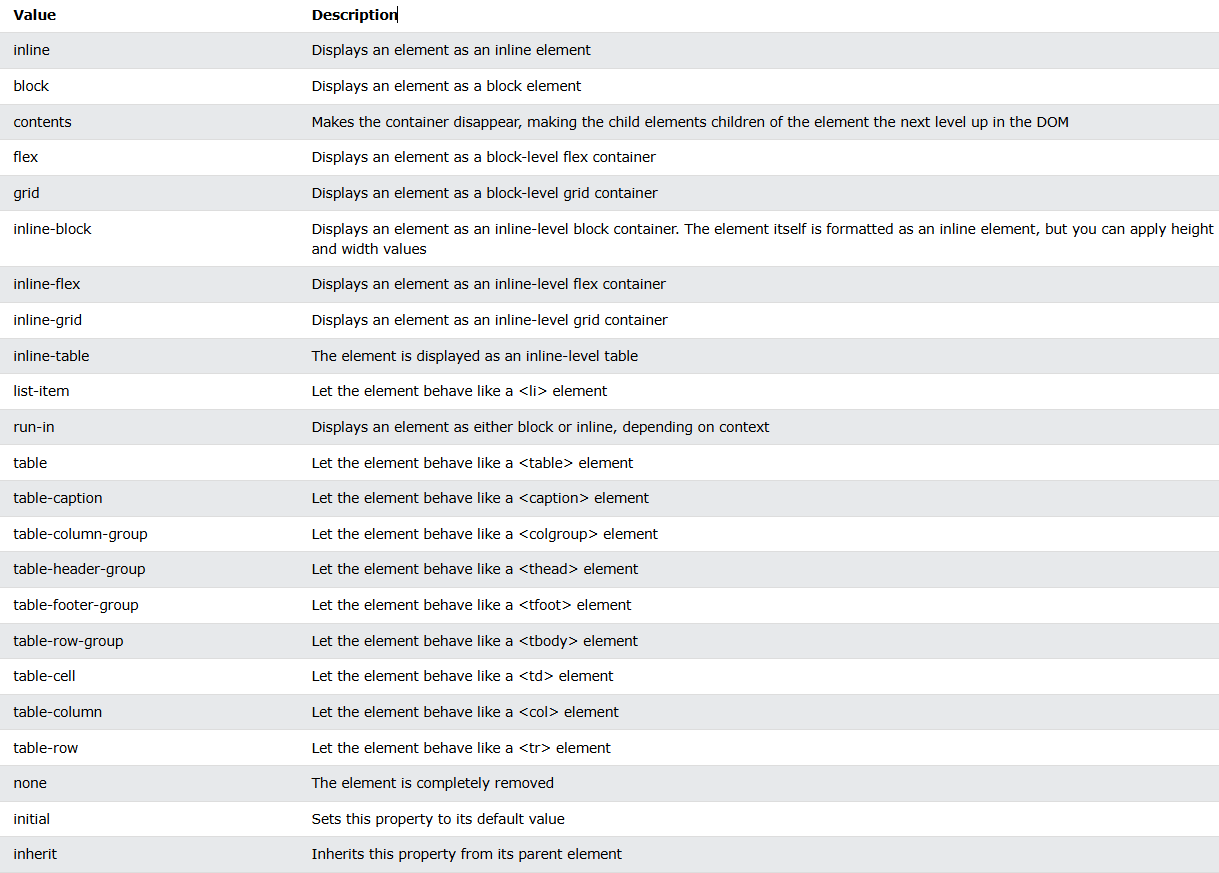The display Property
The display property is used to specify how an element is shown on a web page.
Every HTML element has a default display value, depending on what type of element it is. The default display value for most elements is block or inline.
Block-level Elements
A block-level element ALWAYS starts on a new line and takes up the full width available (stretches out to the left and right as far as it can).
Examples of block-level elements:
- <div>
- <h1> - <h6>
- <p>
- <form>
- <header>
- <footer>
- <section>
Inline Elements
An inline element DOES NOT start on a new line and only takes up as much width as necessary.
This is an inline span element inside a paragraph.
Examples of inline elements:
- <span>
- <a>
- <img>
The display Property Values

Display: none;
display: none; is commonly used with JavaScript to hide and show elements without deleting and recreating them. Take a look at our last example on this page if you want to know how this can be achieved.
The <script> element uses display: none; as default.
Hide an Element - display:none or visibility:hidden?
الاتنين مش بيعملوا نفس الحاجة يعني لو حطيت ال display: none هيعتبر ان العنصر مش موجود أصلًا وهيخفيه انما ال visibility: hidden دا هيسيب مكانها فاضي فهيأثر على ال layout
h1.hidden { display: none;}
h1.hidden { visibility: hidden;}وضحة هنا أكتر CSS Layout - The display Property